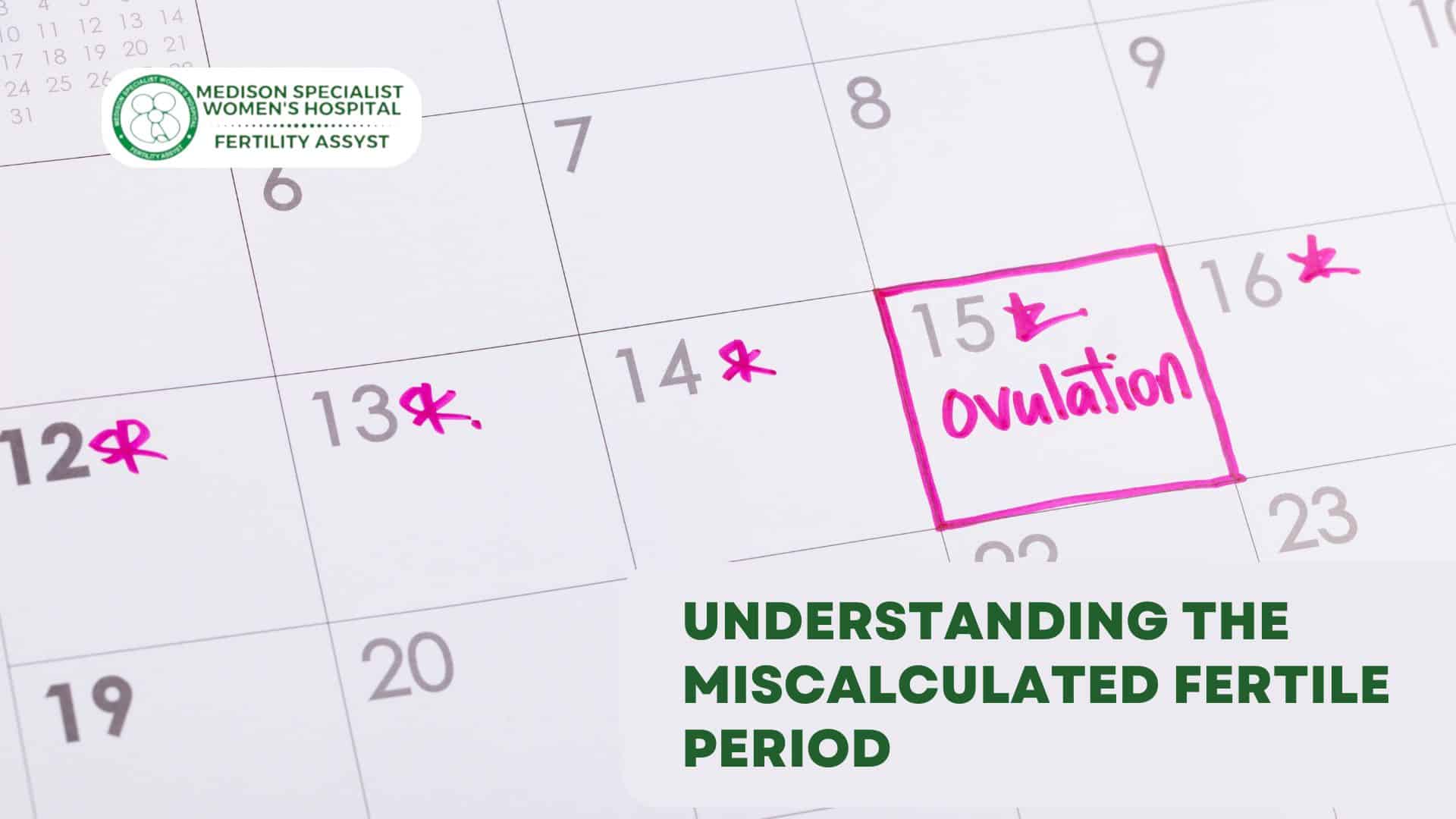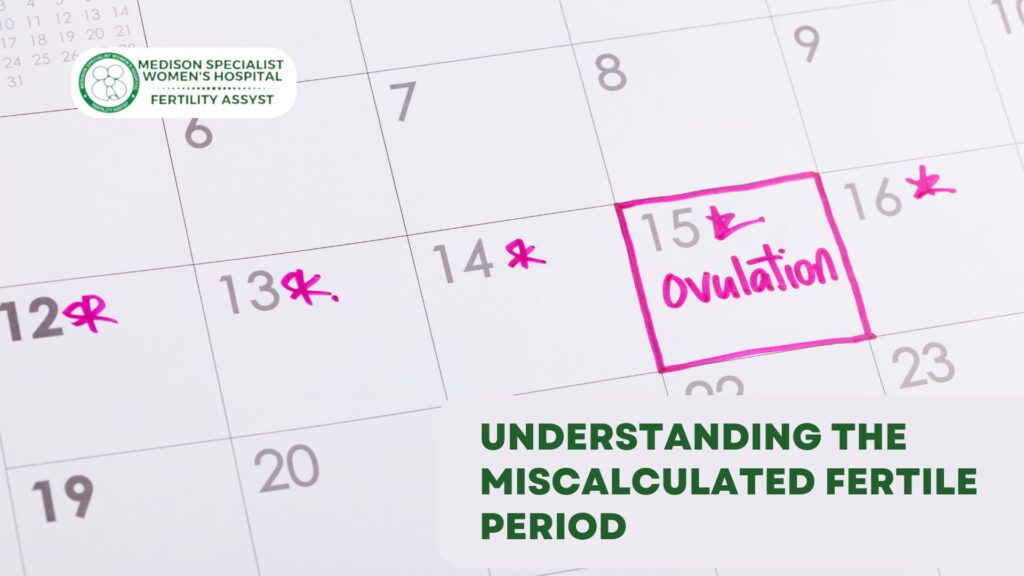Understanding the Miscalculated Fertile Period: Implications and Solutions
In the journey of conception, understanding the fertile period is crucial for couples trying to conceive. The fertile period refers to the days in a woman’s menstrual cycle when pregnancy is most likely to occur. However, many couples face challenges due to miscalculations of this period. This blog aims to provide an in-depth exploration of the miscalculated fertile period, its implications, and potential solutions. We will delve into the biological basis of the fertile period, common misconceptions, the impact of miscalculations, and strategies to improve accuracy in determining the fertile window.
 The Biological Basis of the Fertile Period
The Biological Basis of the Fertile Period
The Menstrual Cycle
The menstrual cycle is divided into several phases:
- Menstrual Phase (Days 1-5): This is the period of menstrual bleeding, signaling the start of a new cycle.
- Follicular Phase (Days 1-13): During this phase, follicles in the ovaries mature under the influence of follicle-stimulating hormone (FSH). One follicle becomes dominant and prepares for ovulation.
- Ovulation (Day 14): The dominant follicle releases an egg, which travels down the fallopian tube towards the uterus.
- Luteal Phase (Days 15-28): The corpus luteum forms from the remnants of the dominant follicle and secretes progesterone to prepare the uterine lining for a potential pregnancy.
The Fertile Window
The fertile window typically spans 6 days, ending on the day of ovulation. This includes:
- Five Days Before Ovulation: Sperm can survive in the female reproductive tract for up to five days.
- Day of Ovulation: The egg is viable for about 12-24 hours after being released.
Common Misconceptions About the Fertile Period The “14th Day” Myth
One of the most pervasive misconceptions is that ovulation always occurs on the 14th day of the menstrual cycle. This assumption is based on a textbook 28-day cycle, but menstrual cycles can vary significantly among women, ranging from 21 to 35 days or even longer.
Regular vs. Irregular Cycles
Women with irregular menstrual cycles often find it more challenging to predict ovulation accurately. Variations in cycle length can lead to significant discrepancies in identifying the fertile window.
Relying Solely on Calendar Methods
Calendar methods, such as the rhythm method, rely on tracking menstrual cycles over several months to predict future fertile windows. However, this approach can be unreliable, especially for women with irregular cycles.
Implications of Miscalculating the Fertile Period
Emotional Stress and Relationship Strain
Couples trying to conceive may experience significant emotional stress when conception does not occur as expected. Miscalculating the fertile period can lead to repeated disappointments and increased anxiety.
Delayed Conception
Incorrectly identifying the fertile window can result in missed opportunities for conception, leading to delays in achieving pregnancy. This can be particularly frustrating for couples who have been trying to conceive for an extended period.
Increased Medical Interventions
Couples who struggle to conceive often turn to medical interventions, such as fertility treatments, sooner than necessary if they miscalculate the fertile period. While these treatments can be effective, they are often costly and emotionally taxing.
Strategies for Accurate Fertile Window Calculation
Understanding Cycle Length Variability
Women should track their menstrual cycles for several months to understand their unique patterns and variability. Apps and digital tools can assist in recording cycle lengths and predicting ovulation more accurately.
Basal Body Temperature (BBT) Charting
Tracking basal body temperature involves measuring body temperature each morning before any activity. A slight increase in BBT typically occurs after ovulation, indicating that the fertile window has just passed.
Cervical Mucus Monitoring
Changes in cervical mucus consistency can indicate approaching ovulation. During the fertile window, cervical mucus becomes clear, slippery, and stretchy, resembling egg whites.
Ovulation Predictor Kits (OPKs)
OPKs detect the surge in luteinizing hormone (LH) that precedes ovulation by 24-48 hours. These kits can provide a more precise indication of the fertile window compared to calendar methods alone.
Hormone Tracking Devices
Advancements in technology have led to the development of hormone tracking devices that measure hormone levels in urine or saliva. These devices can provide real-time insights into the fertile window.
The Role of Healthcare Providers
Preconception Counseling
Healthcare providers can offer valuable guidance during preconception counseling, including education on tracking ovulation and identifying the fertile window. They can also address any underlying health issues that may affect fertility.
Fertility Testing
For couples who have been trying to conceive for an extended period without success, fertility testing can help identify potential issues. Tests may include hormone assessments, semen analysis, and imaging studies to evaluate reproductive health.
Personalized Fertility Plans
Healthcare providers can develop personalized fertility plans based on individual cycle patterns, health history, and any identified fertility issues. These plans may include recommendations for lifestyle changes, supplements, or medical interventions.
Case Studies: Learning from Experiences
Case Study 1: Irregular Cycles and Fertility Awareness
Sarah, a 32-year-old woman with irregular menstrual cycles, struggled to conceive for over a year. She relied on calendar methods, assuming ovulation occurred on the 14th day. After consulting with her healthcare provider, Sarah began tracking her basal body temperature and cervical mucus. She discovered that her ovulation occurred much later in her cycle, around day 20. With this newfound understanding, Sarah and her partner adjusted their timing and successfully conceived within three months.
Case Study 2: Misinterpreted OPK Results
Emily and John, a couple in their early 30s, used ovulation predictor kits to identify their fertile window. However, they misinterpreted the results, believing that the positive test indicated the start of ovulation rather than the impending LH surge. Consequently, they missed the optimal days for conception. After seeking advice from a fertility specialist, they learned to use the OPKs correctly and adjusted their timing, leading to a successful pregnancy.
Conclusion
Accurately identifying the fertile period is crucial for couples trying to conceive. Miscalculations can lead to emotional stress, delayed conception, and unnecessary medical interventions. By understanding the biological basis of the menstrual cycle, recognizing common misconceptions, and utilizing effective tracking methods, couples can improve their chances of accurately determining the fertile window. Healthcare providers play a vital role in guiding couples through this process, offering personalized advice and support. With the right knowledge and tools, couples can navigate the journey of conception with greater confidence and success.

